K-12 education might sound like a secret code used by teachers, but it’s actually the backbone of learning in the United States. Covering everything from kindergarten to 12th grade, this system shapes young minds and prepares them for the real world—or at least for surviving high school drama.
In a world where knowledge is power and homework can feel like a form of torture, understanding the meaning behind K-12 education is crucial. It’s not just about textbooks and tests; it’s about fostering creativity, critical thinking, and those all-important social skills. So buckle up as we dive into what K-12 really means and why it matters more than ever in today’s fast-paced society.
K-12 Education Meaning
K-12 education signifies the comprehensive educational system in the United States, spanning from kindergarten through 12th grade. This system shapes not only academic learning but also fosters essential life skills in students.
Definition of K-12 Education
K-12 education refers to the structured education system designed for children from age five to eighteen. This includes kindergarten and the subsequent 12 grades leading up to high school graduation. Emphasis exists on a well-rounded curriculum, which addresses various subjects alongside critical thinking, creativity, and emotional development. Schools operate within this framework to cultivate a holistic educational environment that prepares students for higher education or the workforce.
Historical Context of K-12 Education
K-12 education evolved significantly over the last century. The early 20th century marked the establishment of compulsory education laws in various states, which mandated schooling for children. During the 1950s and 1960s, reforms aimed at integrating diverse student populations further transformed the K-12 landscape. Initiatives expanded access to quality education, promoting equity within schools. Today’s K-12 system incorporates evolving educational standards and seeks to adapt to technological advancements, equipping students for a rapidly changing world.
The Structure of K-12 Education

K-12 education comprises three main levels: elementary, middle, and high school. Each level plays a critical role in student development.
Elementary Education
Elementary education serves children from kindergarten through fifth or sixth grade. Students typically begin formal education here around age five. Core subjects such as reading, writing, and mathematics form the foundation of learning. Teachers introduce concepts through hands-on activities and group work, fostering social skills along with critical thinking. Additionally, students explore subjects like science and art, which encourage creativity and exploration. This stage sets the groundwork for future academic and personal growth.
Middle School Education
Middle school education generally involves sixth through eighth grades. Students transition to more specialized subjects, including history and foreign languages. Guidance counselors often support students in academic and emotional development, helping them navigate the changes of early adolescence. Teachers emphasize independent thinking and problem-solving skills, preparing students for high school challenges. Extracurricular activities provide opportunities for social engagement and skill development. The focus on building relationships and responsibility is essential during this pivotal stage.
High School Education
High school education includes grades nine through twelve and prepares students for post-secondary education or careers. Students select courses based on interests and career paths, such as advanced placement classes or vocational training. Core subjects remain crucial, but elective options like music and technology encourage personal expression. Graduation requirements often include passing standardized tests and completing a certain number of credits. Career counseling plays a vital role in guiding students through college applications and job readiness. This stage equips students with necessary skills for adulthood.
Importance of K-12 Education
K-12 education serves as a foundational element in student development and societal progress. Its impact extends beyond academics, influencing various aspects of life.
Benefits for Students
Students benefit significantly from K-12 education through enhanced critical thinking skills. They gain access to a broad curriculum that fosters creativity and collaboration. Social skills develop through group projects and activities. Exposure to diverse viewpoints prepares them for future challenges. It empowers students with essential life skills, such as communication and problem-solving, crucial for personal and professional success. Structured learning environments support emotional development and resilience.
Role in Society
K-12 education plays a vital role in shaping society. It cultivates informed citizens who contribute positively to their communities. Social equity improves as varied educational opportunities empower all students. Economic growth relies on a well-educated workforce capable of adapting to technological advancements. K-12 education promotes inclusivity, ensuring that different cultures and backgrounds are represented. A strong educational foundation establishes a base for lifelong learning and civic engagement.
Challenges in K-12 Education
K-12 education faces various challenges that impact its effectiveness and accessibility. These obstacles hinder the potential of the education system in America.
Funding Issues
Funding issues create significant hurdles for K-12 institutions. Many schools struggle with insufficient budgets, affecting resources for teachers, technology, and facilities. Data from the National Center for Education Statistics indicates that spending per student varies widely across districts, leading to disparities in education quality. Schools in low-income areas often encounter greater funding challenges, which prevent them from offering essential programs and support services. These disparities can lead to unequal learning environments and limit student opportunities.
Curriculum Development
Curriculum development poses another challenge within K-12 education. Schools must balance state requirements with the need for innovative teaching methods. Engaging students requires a curriculum that fosters critical thinking and creativity. Yet, many curricula remain rigid, focusing primarily on standardized testing. Educational standards also evolve, demanding regular updates to course materials and teaching practices. Teachers and school leaders face difficulties in keeping pace with these changes while addressing diverse student needs. A responsive curriculum that incorporates technology and real-world applications can improve student engagement and outcomes.
Conclusion
K-12 education serves as a cornerstone for personal and societal development. It equips students with essential skills that extend beyond academics, fostering creativity and critical thinking. As the educational landscape evolves, so does the need for a responsive curriculum that meets the demands of a changing world.
Addressing challenges like funding disparities and rigid curricula is crucial for ensuring that all students have access to quality education. By prioritizing inclusivity and innovation within K-12 systems, society can nurture informed citizens who are prepared to contribute positively to their communities. The commitment to enhancing K-12 education ultimately shapes a brighter future for individuals and society as a whole.

